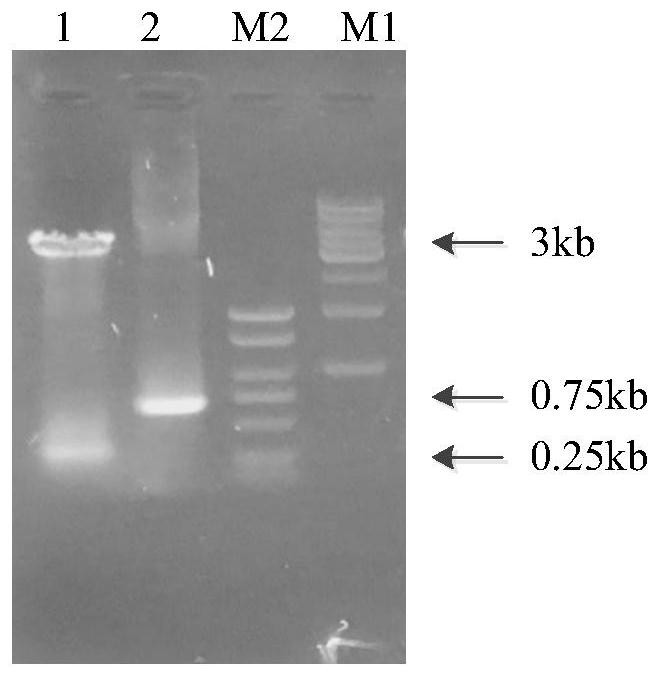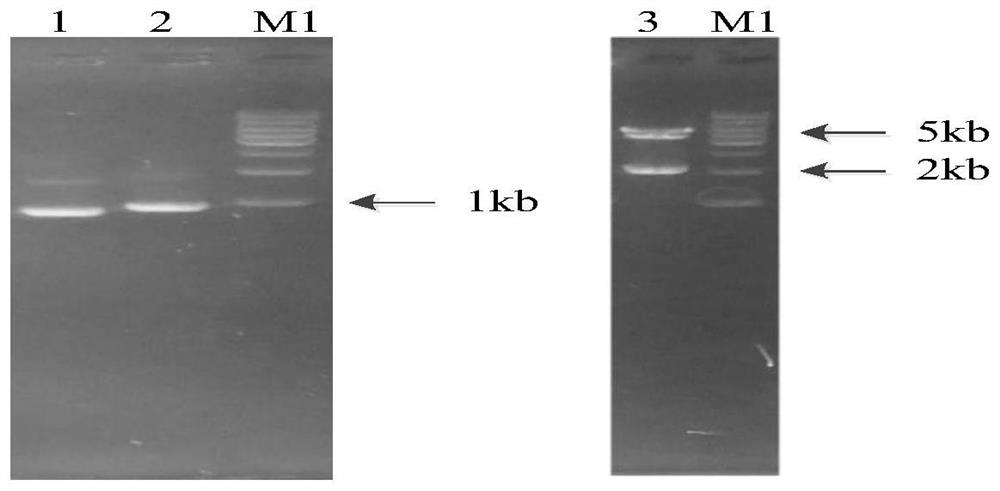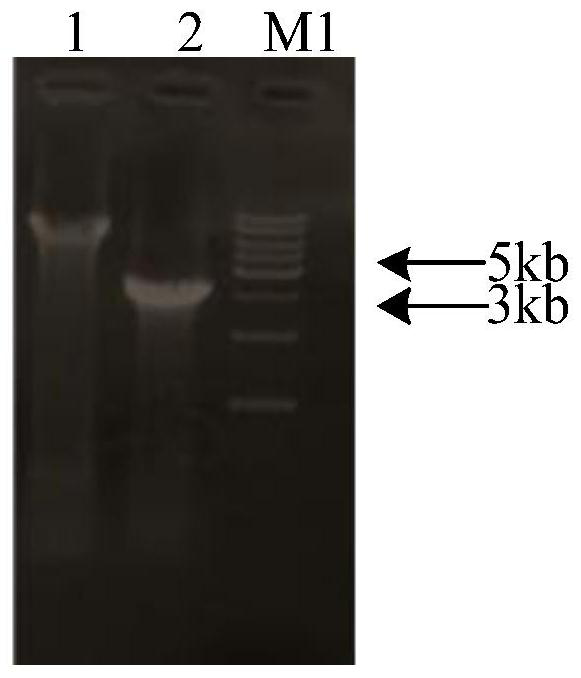Construction method of synthetic strain for generating fengycin by transforming xylose through regulating and controlling Dahms pathway
A construction method, xylose technology, applied in the field of industrial microorganisms, can solve the problems of reduced biomass of strains, poor growth of strains, cytotoxicity, etc.
- Summary
- Abstract
- Description
- Claims
- Application Information
AI Technical Summary
Problems solved by technology
Method used
Image
Examples
Embodiment 1
[0065] Example 1: Construction of Dahms module expression vector pHY300P03
[0066] (1) Promoter P 43 (SEQ ID NO:1) and gene xylB (SEQ ID NO:2), xylC (SEQ ID NO:3), yjhG (SEQ ID NO:4), yjhH (SEQ ID NO:5) gene amplification primer design and synthesis. There are few multiple cloning sites available in the shuttle vector pHY300PLK, so when designing P 43 When using primers, add SphI and XhoI endonuclease recognition sequences to the 3 ends of the primers. According to the nucleotide sequences of genes xylB, xylC, yjhG, and yjhH, the amplification primers containing RBS sequences were designed as follows (the underline indicates the HindIII restriction site, the double underline wavy line indicates the XhoI cleavage site, the single wavy line indicates the SphI, The dotted line indicates SalI, and the double underline indicates the RBS sequence), the plasmid introduction design is as follows, and the primers were synthesized by Qingke Biological Co., Ltd.
[0067] P43-F: AACG...
Embodiment 2
[0105] Example 2: Electric shock transformation of recombinant vectors pHY300P03 and pHP13P03 to BSU00
[0106] (1) Electroporation Competent Preparation of Bacillus subtilis
[0107] Streak culture on the solid LB plate of Bacillus subtilis stored at -80°C for 16 hours, pick a single colony and inoculate it in 50mL liquid LB medium, culture overnight at 220rpm, 37°C; inoculate fresh Cultivate in LBS growth medium at 37°C and 220rpm until the OD600 is between 0.85 and 0.95; collect the bacterial solution in a 50mL clean and sterilized centrifuge tube, pre-cool on ice for 30min; centrifuge at 6000rpm at 4°C for 10min, pour Discard the supernatant; wash and resuspend the bacteria with 20mL washing medium, pay attention to slow and gentle blowing, 6000rpm, 4°C for 10min, pour off the supernatant; repeat the previous step 2-3 times; use 1mL electroporation Resuspend the obtained bacteria in the suspension medium, and put each 100 μL aliquot into a clean and sterile 1.5mL centrifu...
Embodiment 3
[0112] Example 3: Fermentation experiment of recombinant strain BSU02 xylose as carbon source to produce fengycin
[0113] (1) Culture medium composition:
[0114] Solid medium: peptone 10g / L, yeast powder 5g / L, sodium chloride 10g / L, agar 20g / L;
[0115] Seed medium: peptone 10g / L, yeast powder 5g / L, sodium chloride 10g / L;
[0116] Fermentation medium: xylose 15g / L, soybean cake powder 21.9g / L, NaNO 3 3g / L, MnSO 4 0.2g / L;
[0117] (2) Fermentation experiment: the bacterial strain BSU02 constructed by the present invention was cultured and activated in a solid medium at 37°C for 20h, and a single colony was picked and placed in a 250mL shaker flask containing 50mL seed medium, cultivated overnight at 37°C and 220rpm, and press 5% of the inoculum was taken to ferment the seed liquid into the fermentation medium, 30°C, 200rpm conditional culture for 60h, and the fermentation ended.
[0118] (3) Extraction and determination of fengycin: Take 20mL of the fermentation broth ...
PUM
 Login to View More
Login to View More Abstract
Description
Claims
Application Information
 Login to View More
Login to View More - R&D
- Intellectual Property
- Life Sciences
- Materials
- Tech Scout
- Unparalleled Data Quality
- Higher Quality Content
- 60% Fewer Hallucinations
Browse by: Latest US Patents, China's latest patents, Technical Efficacy Thesaurus, Application Domain, Technology Topic, Popular Technical Reports.
© 2025 PatSnap. All rights reserved.Legal|Privacy policy|Modern Slavery Act Transparency Statement|Sitemap|About US| Contact US: help@patsnap.com



